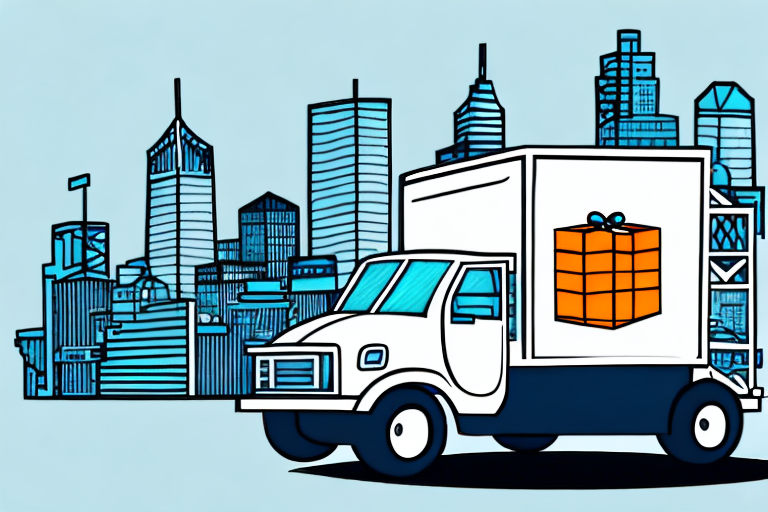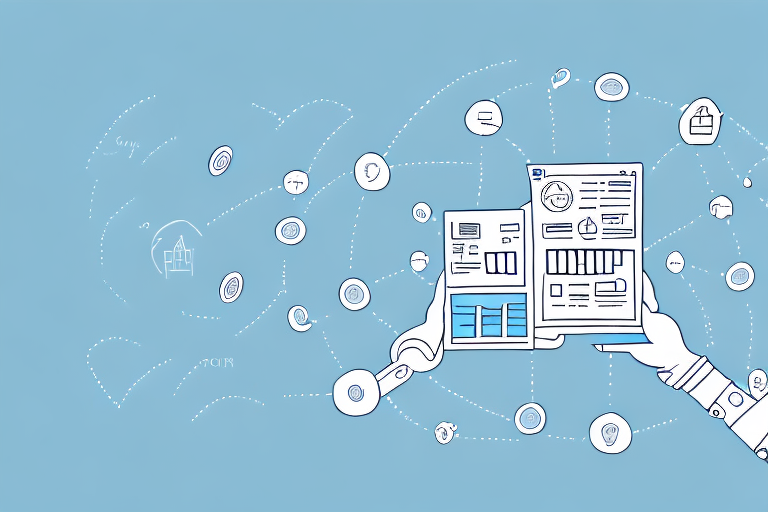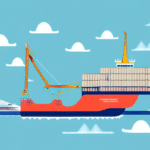Optimizing Courier Deliveries for Maximum Efficiency
Courier delivery optimization is crucial for today's businesses in our fast-paced world. Ensuring that deliveries reach customers timely and efficiently is vital to maintaining customer satisfaction and loyalty. In this article, we will explore the importance of courier delivery optimization and how it can be achieved through understanding common challenges faced by courier delivery companies, analyzing data, leveraging technology, developing effective route planning strategies, and measuring success through key metrics.
Understanding the Importance of Courier Delivery Optimization
Courier delivery optimization involves the efficient movement of goods from the point of origin to the customer's doorstep. This entails proper management of processes and resources to ensure that deliveries meet customer expectations in a timely and cost-effective manner.
The benefits of optimizing courier delivery services include:
- Enhanced Customer Experience: Fast and reliable deliveries increase customer satisfaction and loyalty.
- Improved Operational Efficiency: Streamlined operations lead to better resource utilization.
- Reduced Operational Costs: Efficient routing and resource management lower expenses.
- Increased Revenue: Satisfied customers are more likely to make repeat purchases.
Meeting customer demands by providing quick and reliable courier deliveries is the key to gaining a competitive edge in today's business environment. According to a Statista report, the global courier delivery market is expected to grow significantly, emphasizing the need for optimization to stay ahead.
Common Challenges Faced by Courier Delivery Companies
The courier delivery industry faces several challenges, including:
- Unpredictable traffic conditions
- Vehicle breakdowns
- Incorrect addresses
- Weather disruptions
- Fluctuating fuel prices
These challenges can cause delays and inefficiencies, affecting delivery times and, ultimately, customer satisfaction. However, courier delivery companies can overcome these challenges through effective planning, implementing technology, and optimizing their operational processes.
One of the largest challenges is the increasing demand for same-day and next-day delivery services. With the rise of e-commerce, customers expect faster delivery times and more flexible delivery options. To meet this demand, companies are investing in new technologies such as drones and autonomous vehicles, expanding their network of delivery partners, and optimizing delivery routes.
Analyzing Data to Improve Courier Delivery Efficiency
Data analysis is critical for identifying areas of inefficiency in courier delivery operations. This includes analyzing delivery routes, delivery times, customer locations, and vehicle performance. Through data analysis, courier companies can optimize their delivery routes, reduce transportation costs, and improve the overall delivery process.
Optimizing Delivery Routes
Using advanced software that considers variables such as traffic congestion, distance, delivery time windows, weather forecasts, and customer preferences helps in streamlining the delivery process and improving delivery time frames.
Improving Vehicle Performance
By analyzing data on fuel consumption, maintenance costs, and driver behavior, companies can identify areas for improvement. Implementing changes like switching to more fuel-efficient vehicles or providing training on eco-friendly driving techniques can significantly reduce costs and increase efficiency.
Enhancing Customer Satisfaction
Analyzing customer feedback and delivery data allows companies to identify common issues and address them. This may include improving communication with customers, providing more accurate delivery time estimates, or offering additional delivery options such as same-day or weekend delivery.
According to a McKinsey report, data-driven strategies can lead to a 15% increase in delivery efficiency.
Leveraging Technology to Optimize Courier Deliveries
The use of technology is a crucial component of courier delivery optimization. The adoption of software and hardware systems, such as GPS tracking, courier management software, barcode scanning, and electronic signature capture, helps courier companies improve their operational efficiency.
GPS Tracking Systems
Implementing GPS tracking technology enables companies to monitor the location and movement of delivery vehicles in real-time. This allows dispatchers to reroute vehicles in cases of unexpected delays or to take advantage of new opportunities to improve routing based on traffic and weather conditions.
Route Optimization Software
This software uses algorithms to determine the most efficient delivery routes based on factors such as distance, traffic, and delivery time windows. By using this software, courier companies can reduce delivery times, fuel costs, and vehicle wear and tear, while also improving customer satisfaction by providing more accurate delivery estimates.
Automated Management Systems
Courier management software streamlines operations by automating scheduling, dispatching, and tracking, leading to enhanced operational efficiency and reduced human error.
According to Forbes, integrating advanced technologies can lead to a 20% reduction in delivery times.
Developing Effective Route Planning Strategies
Developing a route planning strategy is a critical component of courier delivery optimization. Companies must plan delivery routes that are the most efficient concerning time, distance, and cost. This helps to reduce operational costs, improve customer satisfaction, and optimize delivery times.
Factors to Consider in Route Planning
- Delivery time windows
- Customer preferences
- Traffic conditions
- Type of goods being delivered
- Geographical limitations
By determining the ideal delivery route for each vehicle using software tools and real-time data feeds, courier companies can optimize delivery times and reduce transportation costs while still meeting customer demands.
Adapting to Different Types of Deliveries
The type of goods being delivered can impact the route planning strategy. For example, perishable items may require faster delivery times and different routes than non-perishable items. Additionally, the size and weight of packages may necessitate different types of vehicles or routes.
Implementing flexible route planning strategies ensures that courier companies can handle various delivery scenarios efficiently.
Measuring Success: Key Metrics for Optimized Deliveries
To benchmark and measure the success of courier delivery optimization, companies must track key metrics such as:
- Delivery Time Frames: The time taken from order placement to delivery.
- Transportation Costs: Expenses related to fuel, vehicle maintenance, and driver salaries.
- Customer Satisfaction Ratings: Feedback and ratings provided by customers post-delivery.
- Delivery Accuracy: The percentage of deliveries made correctly without errors.
By tracking and analyzing these metrics, courier companies can identify trends in their performance and continuously improve their delivery processes. Implementing tools like Tableau or Power BI can aid in visualizing and interpreting these metrics effectively.
Overcoming Last-Mile Challenges with Innovative Solutions
The last-mile delivery, which is the final stage of the delivery process, is often the most challenging to optimize due to variables such as delivery times, traffic, customer preferences, and geographical limitations.
Courier delivery companies can overcome last-mile challenges through the implementation of innovative solutions such as:
- Drones: Allow for quick and efficient deliveries, especially in remote or congested areas.
- Autonomous Delivery Robots: Provide contactless delivery options, reducing the need for human intervention.
- Bike Couriers: Ideal for urban areas with heavy traffic, offering a swift alternative to traditional vehicles.
These solutions enable companies to circumvent traffic congestion, reduce delivery times, and reach remote locations more efficiently.
According to a Business Insider article, drone deliveries are projected to handle up to 9 billion packages annually by 2027.
Enhancing Customer Satisfaction through Optimized Deliveries
Customer satisfaction is critical to the success of any business, and courier delivery companies are no exception. Customers expect reliable, fast, and secure delivery services that meet their specific needs. Courier companies must tailor their delivery services to meet customer expectations by:
- Reducing delivery times
- Providing accurate tracking and delivery notifications
- Offering flexible delivery options
- Engaging in effective communication
By optimizing courier deliveries, companies can increase customer satisfaction, leading to improved brand reputation and customer loyalty.
Implementing Route Optimization Software
Route optimization software helps courier companies plan the most efficient routes for their drivers, reducing delivery times and improving overall delivery performance. Additionally, it can help companies reduce fuel costs and minimize their carbon footprint.
Offering Flexible Delivery Options
Customers appreciate the ability to choose delivery times and locations that are convenient for them. Courier companies can offer options such as evening or weekend deliveries, or the ability to pick up packages at a nearby location, providing customers with greater flexibility and convenience.
A study by Bain & Company found that personalized delivery experiences can increase customer retention by up to 25%.
Cost Savings through Effective Courier Delivery Optimization
Courier delivery optimization can help companies reduce operational costs and increase profits by:
- Optimizing delivery routes to save fuel and time
- Reducing transportation costs through efficient resource management
- Minimizing in-transit time to enhance productivity
- Increasing efficiency through technology and software tools
By implementing these strategies, courier companies can lower their operational costs while maintaining high service standards, leading to increased revenue and profitability.
According to Harvard Business Review, logistics optimization can lead to cost reductions of up to 30%.
Achieving Sustainability Goals through Optimized Deliveries
Courier delivery optimization can aid in achieving sustainability goals by reducing transportation emissions and operational costs. Sustainable practices include:
- Using eco-friendly vehicles such as electric or hybrid trucks
- Optimizing delivery routes to minimize fuel consumption
- Monitoring and reducing carbon emissions
By implementing these practices, courier companies can contribute to environmental sustainability while also reducing operational costs.
A report by the World Wildlife Fund highlights that transitioning to electric vehicles can reduce carbon emissions by up to 50%.
Future Trends in Courier Delivery Optimization
The courier delivery optimization industry is continuously evolving with advancements in technology. Future trends include:
- Machine Learning and Artificial Intelligence: Enhancing route optimization and predictive maintenance.
- Blockchain Technology: Improving transparency and security in the supply chain.
- Internet of Things (IoT): Enabling real-time tracking and monitoring of deliveries.
These advancements will help companies continually optimize their delivery processes and enhance the overall customer experience.
According to a Gartner report, AI is expected to transform logistics and delivery services by 2025, improving efficiency and reducing costs.
Case Studies: Real-Life Examples of Successful Courier Delivery Optimization
To gain a better understanding of how courier delivery optimization can improve delivery processes and customer experience, let's look at some real-life case studies.
UPS: Leveraging Technology for Efficiency
UPS, one of the world's largest courier delivery companies, has leveraged technology to optimize their delivery processes. Through the implementation of advanced route optimization software, UPS has reduced transportation costs by millions annually and improved delivery times. This has led to increased operational efficiency and enhanced customer satisfaction.
DHL: Innovating Last-Mile Delivery
DHL has utilized innovative solutions such as autonomous delivery robots and drones to overcome last-mile challenges in remote areas. These technologies have allowed DHL to circumvent traffic congestion, reduce delivery times, and reach customers more efficiently, resulting in improved operational efficiency and customer experience.
For more details on these case studies, refer to the DHL Insights and the UPS Technology Insights.
Conclusion
Courier delivery optimization is essential to meet the expectations of today's customers. By analyzing data, leveraging technology, developing effective route planning strategies, measuring success through key metrics, and adhering to industry best practices, courier companies can achieve optimized deliveries, reduce operational costs, and improve customer satisfaction. The future of courier delivery optimization is promising, with advancements in technology set to further enhance delivery processes and customer experiences.




















